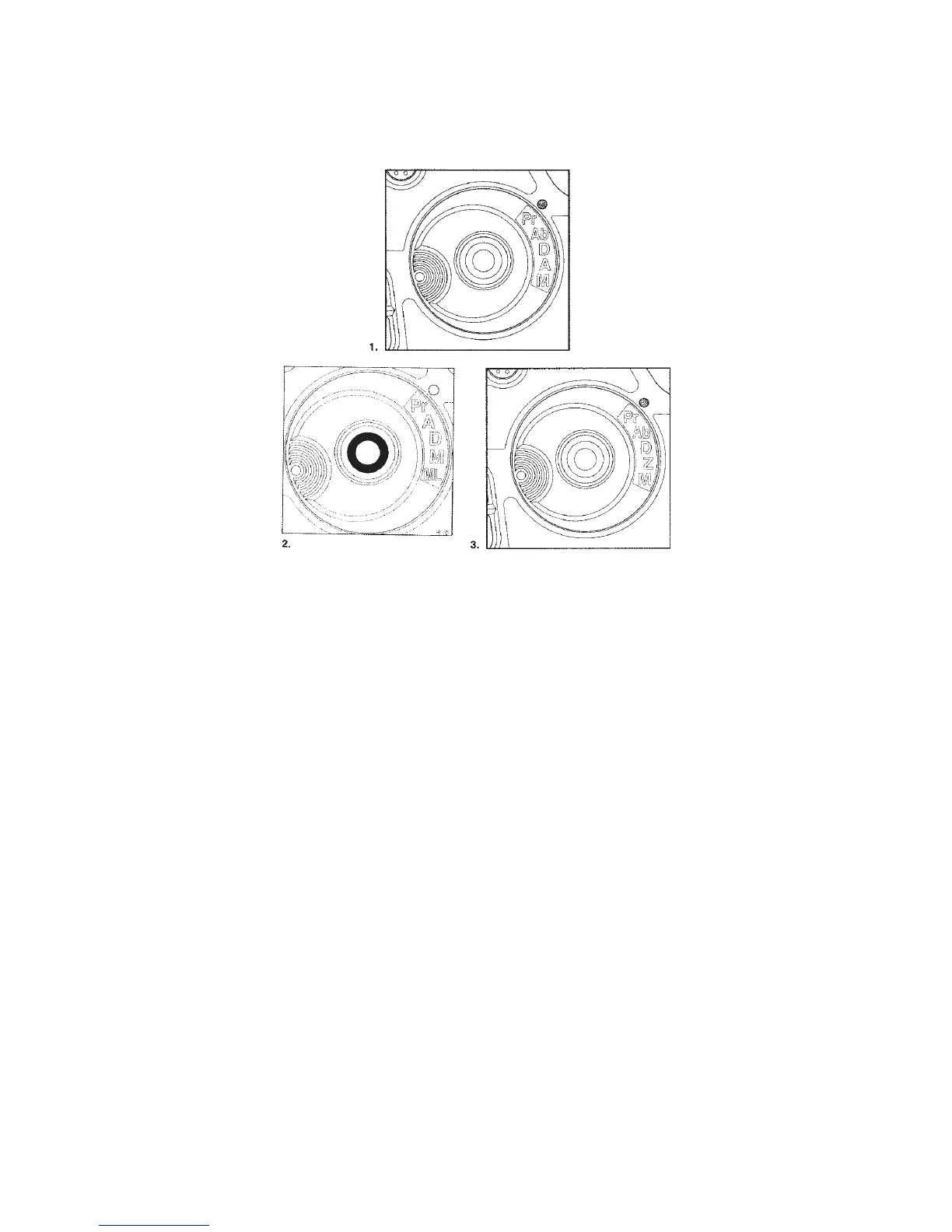Operating the 200 Cameras for Digital Imaging and Film Photography 199
Batteries
The basic camera operations are mechanical, but the shutter speeds are controlled electroni-
cally from the power of a 6 V PX28 battery, preferably lithium, stored in a battery compart-
ment. In 202, 203, and 205 camera models, the battery also powers the metering system. Its
life span depends mainly on the use of the meter and the display light. At normal tempera-
tures, a battery should last for more than 4000 metering cycles of 15 seconds each. To save
battery power, the electronic circuit turns off automatically after about 15 seconds. A battery
symbol in the viewfi nder shows when the battery needs to be replaced.
Before inserting or changing a battery, turn the winding crank with the center disc
depressed so the camera is in the ready state. Insert the battery with the minus () and plus
() ends positioned as engraved on the compartment. Whenever you remove the battery
compartment, all values programmed into the electronic circuit change to the standard values
mentioned in the later section Programming Camera Functions. Using the lens shutter with
the shutter speed ring in 203 or 205 cameras set to C, you can make an exposure without a
battery in the camera.
Pre-Releasing and Use of Self-Timer
Lock the mirror up and pre-release the camera by pressing the release under the winding
crank one time toward the rear (see Figure 12-3). To see the image again before making the
exposure, simply turn the crank with the center disc pressed.
Figure 12-2 The exposure mode selector: 203 model (1), 202 model (2), 205 model (3). The
original 205TCC had A instead of Ab (no automatic bracketing), and the Pr and A settings
were reversed, with A on top.

